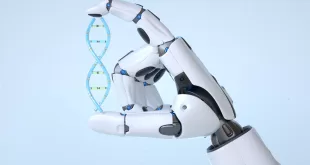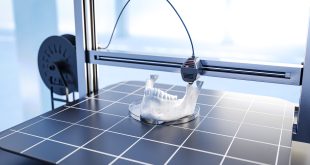By Muriel Art, Vincent Dufey, Ulrike Gast, Ioan Gligor, Laura Koch, and Ronja Kubasch
Abstract
Pipettes are tools widely used in the lab and usually purchased with care. However, as pipette tips are only consumables, they are not usually selected with quality in mind. The standard ISO 8655:2002 recommends using pipette and tips from the same supplier. This study, including tips from 15 different manufacturers, proves that a pipetting system working perfectly with a certain tip exceeds the permissible error tolerances when a tip from a different manufacturer is used. Furthermore, we found that the calibration method influences the performance of the pipetting system: It is significant whether the calibration is done with or without tip change for each measured volume. Autoclaving impacts the tip dimension as well as the calibration result especially with small volumes.
Introduction
Within the scientific community, a rising number of experiments published cannot be reproduced by other groups. Incorrect pipette handling (e.g. holding the pipette at an angle during liquid aspiration) may be one reason for this. A second source of error often not taken seriously is plastics. Consumables may lead to problems with analysis results, e.g. due to leachables, as well as incorrect pipetting volumes. This may result in non-reproducible data if experiments are repeated by other groups using other consumables. Some problems with pipette tips are obvious like:
> Tips have to be pushed powerfully onto the pipette cone in order to achieve efficient tip fit.
> Banana-shaped tips make it difficult to fill a plate with multichannel pipettes.
> Pipetting of volumes below 1 μL on a solid surface is impossible because the liquid drop sticks to the outside of the tip.
In the same way that only the tip of an iceberg can be seen above water level, a number of other problems with pipette tips rather stay unknown. One example is decreased pipette accuracy when using tips not recommended by the pipette supplier. The latter often stays unnoticed since problems with analysis results are usually linked to reagents, method and pipette but not to the pipette’s consumable.
Moreover, calibrations are understood as “checking the pipette” instead of “checking the system”. Thus, instead of checking the tips utilized in the lab only the tips recommended by the manufacturer are used for calibration. The ISO 8655-21 defines the pipette and tip to be a system. It stipulates extra calibration for the use of other manufacturer’s tips. But why does this standard put so much focus on a product that is to be discarded after use?
This paper shows the influence of tips on the pipetting result. It explains the origin of such influences and what to look for when purchasing tips not recommended by the pipette manufacturer. Basically, the main influencing factors are design/shape, production quality and material. These factors do not only influence the single pipetting result, they also have methodical consequences like varying results when calibrating with one/several tips or changing results by autoclaving.
The aim of this paper is to picture the iceberg underneath the water level: to generate understanding why the pipette and its tip form a system with both components having equal influence on pipetting results.
Results and Discussion
Influence of tips on the performance of the pipetting system
The pipette and tip system was perfectly within the error limits when proprietary tips were used. It was outside the specifications when used with tips from other manufacturers. As shown in Fig. 1, the systematic error was exceeded in 4 cases with a volume of 1,000 μL (manufacturers C, E, K, N) and in 5 cases with a test volume of 1 μL (manufacturers A, E, F, H, M). With three of those 1,000 μL tips, the test volume not only exceeded the manufacturer specifications but also the wider maximum permissible systematic error as stated by the ISO 8655:2002 standard1. In contrast, the random error was increased noticeably but stayed within permissible tolerances.
If all calibration results are combined, a total number of eight from 15 manufacturers exceeded the specifications. However, it cannot be assumed that all tips from a manufacturer are affected if with one tip the calibration result exceeded the permissible error limits. For example, the 10 μL tip from manufacturer K performs within error tolerances whilst the 1,000 μL tip from manufacturer K exceeds the pipette manufacturer’s and ISO 8655 specifications.
Calibration results were found to be independent of the pipette manufacturer and were reconfirmed by calibrating with a pipette from another manufacturer (data not shown). This corresponds to the requirements of standard ISO 86551. All pipette users should be aware of the fact that when using tips not delivered by the pipette supplier, the manufacturer’s declaration or certificate of conformity does not apply. The ISO 8655-21 clearly states the pipette and tip to be a system and recommends using those tips supplied by the pipette manufacturer. In case this is not possible, the ISO 8655 part 21 describes that the user has to perform a conformity test first with tips from the pipette supplier. If the pipette passed the test, a second calibration with tips not supplied by the pipette manufacturer has to be performed. Coming back to the calibration results and taking a closer look at the volumes being most impaired: We found a clear difference between 10 μL and 1,000 μL results. With 1,000 μL tips, the nominal volume (1,000 μL) was found to be most affected whereas with 10 μL tips, the 10 % of nominal volume (1 μL) was found to exceed the technicalspecifications. From this finding, it can be deduced that the violation of systematic error limits has different reasons with 10 μL and 1,000 μL tips. Those main influencing factors are described in the following.
Tip design and its influence on
pipetting results
The dimensional measurements of length and inner diameter showed that some 1,000 μL competitor tips were longer than proprietary tips with the same inner diameter. These longer tips failed the calibration.
In order to explain these findings, it has to be taken into account that pipettes in general are adjusted to a certain air cushion size and filling height of liquid within the tip.
Longer, bigger or slimmer tips lead to an increased total size of air cushion and a different filling level5. If the dead air volume increases, the pipetting volume decreases. Additionally, an increased filling height (e.g. by slim and long geometry of tip) results in an increased hydrostatic pressure which has to be compensated and also leads to a decreased volume and higher systematic error6. Our data show that with 1,000 μL tips the shape-related influencing factors play an immense role. This effect is especially distinct at nominal volume because with 1,000 μL the biggest possible “weight” has to be moved by the air cushion. We see that the tips dimensions do not solely explain the calibration results. Other factors like wetting and quality-related issues, for example, perfection of tip orifice, come into play.
Quality of tip orifice
The zone where the liquid leaves the tip during dispensing is very important for the accuracy of results. At this part of the tip, the drop cut-off occurs. Any imperfection of geometry or shape, e.g. by production failures, leads to water retention. This especially plays a role with small volumes. A poor drop cut-off may not only impair the pipetting result but can also make it impossible to dispense small volumes: sometimes a drop leaves the tip, sometimes it doesn’t.
A good tip has a front phase with a defined wall thickness and surface structure in order to ensure a good drop cut-off. Production tolerances need to be very tight. A poor orifice is not perfectly round or has walls of differing thickness. Liquid drops become deflected to the outside of the thinner wall. Furthermore, it shows “molding flashes” or thin “flashes” where liquid may be retained. In addition, “lying flashes” influence the diameter of the orifice and again lead to liquid retention. From the production view, these flaws occur mainly if poor tools are used especially in combination with a non-optimized injection molding process. Generally, it is recommended to use tips which are made of a non-wetting plastic material with a flawless smooth orifice5.
Water retention on inner surface
Water retention, so-called “wetting” is not only influenced by the tip’s orifice but also by its material and inner surface.
If the inner surface is uneven or the tip is made of an unfavourable material, liquid will be retained on the surface inside the tip. However, a completely smooth inner surface is not the only solution for minimizing water retaining effects. The combination of material composition and surface structure decides on the water retention. Tips are generally made from a plastic called polypropylene (PP). However, PP is not PP. Each tip manufacturer has its own secret formula for the PP it uses to produce pipette tips. From cooking we know that the secret behind a good cake is good ingredients. This also applies to the PP for tips. The mixture of ingredients determines the water repellent characteristics. PP in general is hydrophobic. This can be observed by pipetting drops of water onto different surfaces (e.g. glass and plastic). The rounder the drop, the higher the surface energy and the less the wetting effect. Within this study, we found differences in volume of retained liquid between different tip manufacturers.
Since pipetting errors sum up, like holding angle of pipette during uptake or different temperatures of pipette and liquid, high water retention can cause a pipetting system to be out of specifications.
Tip fit – Influence of sealing rim on creation of an air-tight system
It is a basic requirement of a tip to fit tightly onto a pipette cone in order to generate an air-tight system. The term “tip fit” applies in two different contexts: firstly, does the tip physically fit onto the pipette cone? Secondly, does this tip fit provide a tight sealing?
The physical fit of a tip onto a cone is mainly influenced by the design and shape of its contact zone with the pipette cone. The tip diameter is not the only factor. The connection between tip and pipette cone needs to be tight enough to prevent air passing through. If the tip fit is not tight, the system does not aspirate enough liquid and may leak. In the worst case, the pipette is obviously dripping but incomplete tightness is often not recognized during daily lab work. It was shown that the pipetting error increases by up to -0.6 % systematic error and 0.8 % random error with the generic tips used7. In order to ensure a tight fit on the pipette cone, most tips are equipped with a sealing rim. The position as well as the quality of this sealing rim is important for the tip fit. If the sealing rim is positioned too low, the cone may not reach it.
If the sealing rim is too thick, it takes high forces to fit the tip onto the pipette cone. This has a negative effect on ergonomics and pipetting comfort. The consistent quality of the sealing rim itself is important for the tightness of the system. Its thickness must not vary significantly from tip to tip.
Variations in the quality of the sealing rim mainly originate from three different production failures: 1) the tools used to produce a tip are not equally shaped or are maintained with too infrequently, 2) the injection molding process is not balanced enough to ensure that the sealing rim is perfectly shaped (e.g. not enough plastics injected), 3) application of excessive production tolerances in quality control in order to save money in production.
Conclusion
Within the scientific community, there are a rising number of studies which cannot be reproduced by other groups.
One possible reason may be that the influencing factors of pipette tips are not taken into account – just like recognizing only the tip of an iceberg. We showed within this study that tips from different suppliers can alter the pipetting results and their reproducibility. Thereby, different influencing factors become effective.
Some non-system providers offer tables showing which pipettes certain tips fit. Our results show that a tip fitting onto a pipette cone does not say anything about the pipetting result. Furthermore, our results underline that it does not make much sense to use a “universal” tip if the pipette does not become calibrated (and, if needed, adjusted). Tips are an important component of the system and they are optimized for the pipette they are produced for. Accordingly, the ISO 86551 regards the pipette and tip to be a system and recommends using tips and pipette from the same manufacturer. Our results are evidence that this requirement is meaningful and we strongly recommend naming the tip used within publications and to calibrate (if needed: adjust) the pipettes if other manufacturer tips have to be used.
Excerpt reprinted with permission.
For more information, visit
www.eppendorf.com/eptips.
References
1
ISO 8655:2002 parts 1 – 6: Piston-operated volumetric apparatus.
www.iso.org
2
Eppendorf SOP: Standard operating procedure for manual dispensing tools.
www.eppendorf.com
3
Eppendorf Xplorer® Operating Manual. www.eppendorf.com
4
ISO 10993-12:2012: Biological evaluation of medical devices. Part 12: Sample preparation and reference materials. www.iso.org
5
Lochner KH, Ballweg T, Fahrenkrog HH. Untersuchungen zur Meßungenauigkeit von Kolbenhubpipetten mit Luftpolster. J Lab Med 1996; 20 (7/8): 430-440
6
Salje G. Internal communication
7
Carle AB, Rodrigues G, Rumery D. Best Practices for the Use of Micropipettes. Poster. www.artel-usa.com
8
Wenk E, Lustgarten JA. Technology of Manually Operated Sampler Pipettes.
Clin Chem. 1974, 20(3): 320-323
9
Knaide T, Albert KJ. Quantifying the Impact of Pipette Tip Type Using Dual Dye Ratiometric Technology. ARTEL Application Note 2011;
www.artel-usa.com
10
Grzeskowiak R, Gerke N. Leachables: Minimizing the influence of plastic consumables on the laboratory workflows. Eppendorf White Paper No. 26. www.eppendorf.com
11
Olivieri A, Degenhardt OS, McDonald GR, Narang D, Paulsen IM, Kozuska JL, Holt A. On the disruption of biochemical and biological assays by chemicals leaching from disposable laboratory plasticware. Can J Physiol Pharmacol 2012; 90(6):697-703
12
Watson J, Greenough EB, Leet JE, Ford MJ, Drexler DM, Becastro JV, Herbst JJ, Chatterjee M, Banks M. Extraction, identification, and functional characterization of a bioactive substance from automated compound-handling plastic tips. J. Biomol Screen 2009; 14(5): 566-72
 BioLab Business Magazine Together, we reach farther into the Canadian Science community
BioLab Business Magazine Together, we reach farther into the Canadian Science community





